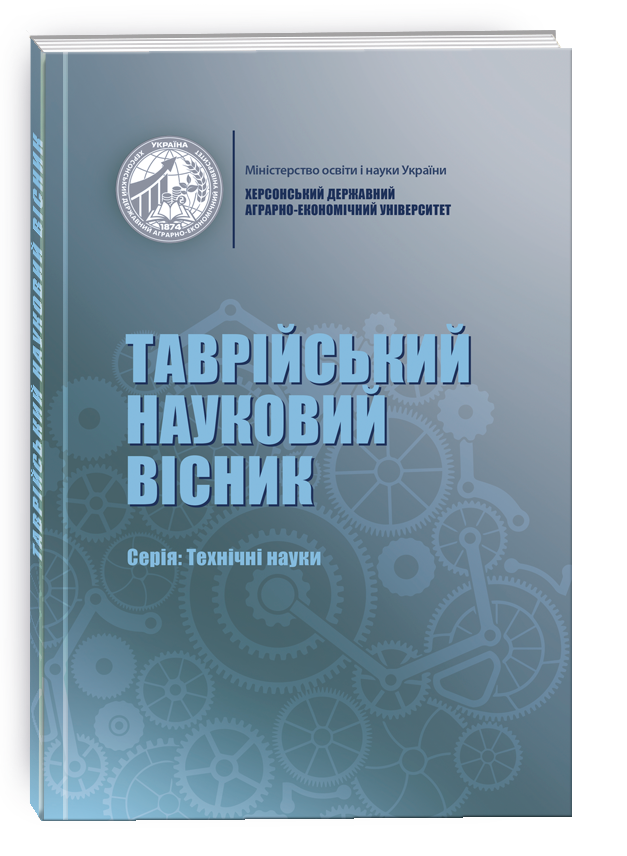THERMAL REGIME CONTROL OF THERMOELECTRIC COOLERS IN AN UNIFORM TEMPERATURE FIELD
DOI:
https://doi.org/10.32851/tnv-tech.2022.1.3Keywords:
cooler control, dynamics and failure rate, current modes, temperature difference, thermoelement branchesAbstract
An analysis of the control model for a thermoelectric device for providing thermal modes of electronic equipment is presented, the reliability indicators of which are significantly determined by the temperature of the elements. Model studies were carried out for conditions of a non-uniform temperature field in the ranges of typical temperature drops, current operating modes and dissipation power. The analysis was carried out for various ratios of height to cross-sectional area of thermoelectric element legs. The advantage of distributed active thermoelectric cooling of radio-electronic systems with spatially spaced heat-loaded elements in comparison with general cooling is substantiated. The possibility of optimal control of the thermal regime of a complex of thermoelectric coolers with a series electrical connection at different cooling levels and thermal load is considered. The main parameters, reliability indicators and dynamic characteristics of the coolers have been determined. The current modes in the construction of the complex are analyzed taking into account the energy, weight and size and reliability characteristics. A comparative analysis of the main parameters, reliability indicators and dynamic characteristics of a complex of thermoelectric coolers at different cooling levels, a given unification of the geometry of thermoelement legs and current operating modes is carried out. The research results have shown the possibility of controlling the thermal regime of the complex of thermoelectric coolers by choosing the thermal regime of operation, taking into account the weight of each of the limiting factors in terms of weight and size, energy and dynamic characteristics. When choosing the current modes, the mutual influence of each of the limiting factors is taken into account, changing which, when designing a system for ensuring thermal modes, it is possible to choose compromise modes of operation.
References
Ellison, G.N. (2020). Thermal Computations for Electronics. Boca Raton: CRC Press, 404 p. Retrieved from: https://doi.org/10.1201/9781003029328 [in English].
Hyoung-Seuk Choi, Won-Seon Seo, Duck-Kyun Choi (2011). Prediction of Reliability on Thermoelectric Module through Accelerated Life Test and Physics of Failure. Electronic Materials Letters, vol. 7. DOI: 10.1007/s13391-011-0917-x [in English].
Erturun, U., Mossi, K. (2012). A Feasibility Investigation on Improving Structural Integrity of Thermoelectric Modules with Varying Geometry. ASME 2012 Conference on Smart Materials, Adaptive Structures and Intelligent Systems (Stone Mountain, Georgia, USA, September 19–21, 2012). DOI: 10.1115/SMASIS2012-8247 [in English].
Venkatesan, K., Venkataramanan, M. (2020). Experimental and Simulation Studies on Thermoelectric Cooler: A Performance Study Approach. International Journal of Thermophysics, vol. 41. DOI: 10.1007/s10765-020-2613-2 [in English].
Hao Li, Xiaohong Ding, Fanzhen Meng, Dalei Jing, Min Xiong (2019). Optimal design and thermal modelling for liquid-cooled heat sink based on multi-objective topology optimization: an experimental and numerical study. International Journal of Heat and Mass Transfer, vol. 144, pp. 1–18. Retrieved from: https://doi.org/10.1016/j.ijheatmasstransfer.2019.118638 [in English].
Xin Dong, Xiaomin Liu (2019). Multi-objective optimal design of microchannel cooling heat sink using topology optimization method. Retrieved from: https://doi.org/10.1080/10407782.2019.1682872 [in English].
Sootsman, J.R., Chung, D.Y., Kanatzidis, M.G. (2009). New and old concepts in thermoelectric materials. Angewandte Chemie – International Edition, vol. 48, iss. 46, pp. 8616–8639 [in English].
Wenlong Jin, Liyao Liu, Tao Yang, Hongguang Shen, Jia Zhu, Wei Xu, Shuzhou Li, Qing Li, Lifeng Chi, Chong-an Di, Daoben Zhu (2018). Exploring Peltier effect in organic thermoelectric films. Nature Communications, vol. 9. DOI: 10.1038/s41467-018-05999-4 [in English].
Ji-Zhu Hu, Bin Liu, Jun Zhou, Baowen Li, Yuanyuan Wang (2018). Enhanced thermoelectric cooling performance with graded thermoelectric materials. Japanese Journal of Applied Physics, vol. 57, no. 7. DOI: 10.7567/jjap.57.071801 [in English].
Saifizi Saidon, M., Lee, T.W., Anuar S.N.N., Zunaidi I., Diana, N.S., Wan Azani, M., Khairunizam, W., Shahriman, A., Zuradzman, M.R. (2018). Development and investigation of thermoelectric cooling performance based on space scales. IOP Conference Series Materials Science and Engineering, vol. 429(1), p. 012083. DOI: 10.1088/1757-899x/429/1/012083 [in English].
Zaykov, V., Mescheryakov, V., Zhuravlov, Yu. (2018). Analysis of relationship between the dynamics of a thermoelectric cooler and its design and modes of operation. Eastern-European Journal of Enterprise Technologies, vol. 1, no. 8(91), pp. 12–24. Retrieved from: https://doi.org/10.15587/1729-4061.2018.123891 [in English].
Zaykov, V., Mescheryakov, V., Zhuravlov, Yu. (2019). Designing a singlecascade thermoelectric cooler with the predefined time to enter a stationary mode of operation. Eastern-European Journal of Enterprise Technologies, vol. 6, no. 8(102), pp. 38–46. Retrieved from: https://doi.org/10.15587/1729-4061.2019.184400 [in English].
Zaykov, V.P., Kinshova, L.A., Moiseev, V.F. (2009). Prediction of reliability indicators, thermoelectric cooling devices. Book 1: One-stage devices. Odesa: Polytehperiodika, 120 p. [in English].
Zaykov, V., Mescheryakov, V., Zhuravlov, Yu. (2019). Prediction of reliability indicators, thermoelectric cooling devices. Book 4: Dynamics of functioning of singlestage TEC. Odesa: Polytehperiodika, 290 p. [in English].







